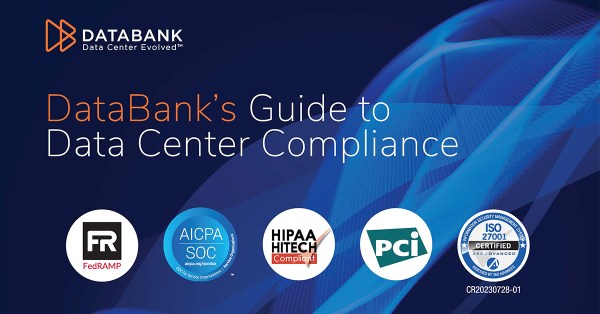Most, if not all, data centers will hold some data that is protected in some way. This could be by law and/or by a regulatory compliance scheme. For this reason, high-quality data centers implement robust security measures that enable them to meet the requirements of laws and data security standards. Here is a quick guide to what you need to know.
Understanding regulatory requirements for data security and privacy
Data security and privacy regulations protect personal information from unauthorized access, breaches, and misuse. They ensure businesses handle data responsibly, maintaining confidentiality, integrity, and availability, fostering trust between consumers and organizations. Most compliance programs address the following areas.
Data minimization: Regulations require businesses to collect only the data that is necessary for a specific purpose. This principle minimizes the risk of exposure and misuse by limiting the amount of personal information held by organizations.
Accountability and transparency: Be transparent about data practices and accountable for compliance. This compliance is often demonstrated through audits.
Consent and control: Inform individuals about data collection and obtain explicit consent, allowing them to control their data.
Security measures: Implementing robust technical and organizational measures to protect data is a cornerstone of these regulations. This includes encryption, access controls, and regular security assessments to prevent unauthorized access and data breaches.
Data subject rights: Grant individuals rights to access, correct, and delete their data, ensuring control over personal information.
Breach notification: Promptly notify affected individuals and authorities in case of a data breach to ensure transparency and protection.
Role of data centers in ensuring data security and privacy compliance
At a minimum, data centers ensure that their core infrastructure meets the relevant compliance standards. Data centers that take on additional responsibilities for their clients will often take on extra compliance responsibilities. Here is an overview of the main compliance measures commonly implemented in data centers.
Physical security measures
Physical security measures typically include multi-layered security protocols such as biometric authentication, security personnel, and 24/7 surveillance with high-definition cameras. Data centers also use mantraps and secure cages or cabinets to control and monitor access to servers.
Environmental controls like fire suppression systems, climate control, and redundant power supplies (UPS and generators) ensure operational continuity and protect against physical damage.
These measures are designed to mitigate risks from physical threats such as theft, vandalism, and natural disasters, thereby ensuring data integrity and compliance with regulatory standards that mandate physical security controls.
Network and cybersecurity measures
Network and cybersecurity measures typically include firewalls, intrusion detection/prevention systems (IDS/IPS), and anti-DDoS solutions to monitor and block unauthorized access and malicious traffic.
Data encryption is applied both in transit and at rest to safeguard data from interception and breaches. Virtual private networks (VPNs) and secure socket layer (SSL)/transport layer security (TLS) protocols are used to secure communications.
Regular vulnerability assessments and penetration testing are conducted to identify and address potential security weaknesses. These comprehensive network and cybersecurity measures ensure compliance with regulations that require stringent data protection and continuous monitoring of cyber threats.
Data backup and disaster recovery solutions
Regular automated backups are performed, often utilizing incremental and differential backup techniques to minimize storage space and recovery time. Data is stored in geographically diverse locations to protect against regional disruptions.
Disaster recovery plans include failover strategies and data replication to secondary sites, ensuring minimal downtime. Data recovery tests are conducted periodically to ensure the effectiveness of the recovery process.
These solutions comply with regulations that mandate data availability and business continuity, protecting businesses from data loss and operational disruptions.
Access control and monitoring
Role-based access control (RBAC) ensures that users have the minimum level of access necessary for their roles. Multi-factor authentication (MFA) adds an extra layer of security beyond passwords. Continuous monitoring tools track access and activities, generating audit logs and real-time alerts for suspicious behavior.
Security information and event management (SIEM) systems aggregate and analyze log data to detect and respond to potential security incidents.
These measures ensure compliance with regulations that require controlled access and detailed activity monitoring, safeguarding data from unauthorized access and breaches.
Compliance management tools and services
Compliance management tools and services provided by data centers help businesses adhere to industry standards and regulatory requirements. These tools include automated compliance monitoring systems that track and report on security controls and data handling practices. Regular security audits and assessments are conducted to identify compliance gaps and recommend remediation actions.
Data centers also offer documentation and reporting services to help businesses demonstrate compliance during regulatory inspections. Compliance management platforms may integrate with existing IT systems to provide a unified view of compliance status, streamlining the management process. These services ensure that businesses remain compliant with evolving regulations, reducing the risk of legal penalties and enhancing data security.






